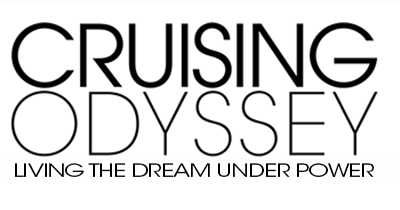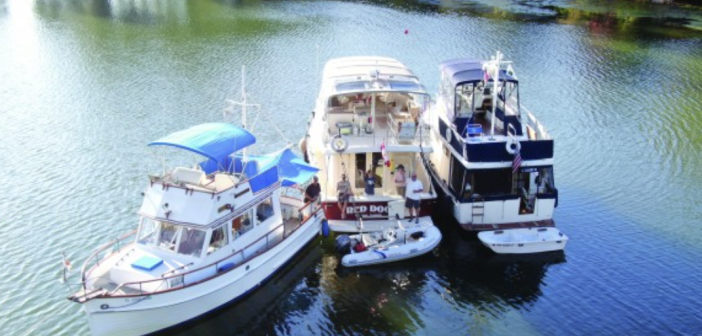The Great Loop circles the eastern half of the United states and is comprised of 6,000 miles of connected rivers, waterways, canals and lakes. It can take nine months or more to complete a full circuit of the loop and along the way you’ll explore the whole east coast, the Great Lakes, the mighty rivers running south to the Gulf of Mexico and both coasts of Florida.
Such a journey has long been on the bucket lists of many a cruiser, yet it is a big bite of the adventure apple to undertake with many challenges to impede your progress. Planning and the right boat are where you start and then you undertake the necessary preparations.
The most obvious aspect of a Great Loop cruise will be that you want to be in the southern states and waterways in winter and up north in the Great Lakes in summer. Fall and spring are the transition months when you are either chased by the geese on the way south or steaming with the sun on you back on the way north. Most cruisers choose to make the loop in a counter-clockwise direction.
The loop has been completed by all types of boats from outboard-powered dinghies to 80-foot yachts. But, the right boats will all have some basic similarities. The lowest fixed bridge on the Loop has an air-draft of 19.6 feet. It’s on the Illinois Waterway and there’s no alternative route. So, your boat will have to be vertically shorter than that.
There are plenty of places along the route where water depth will be a concern, such as the Trent-Severn Waterway where you need to have a draft of five feet or less to comfortably get through. The Trent-Severn aiso has a length restriction of 84 feet and a maximum beam allowed of 23 feet.
Navigation along the Loop will mostly be old-fashion eyeball conning but it will be extremely helpful to have a chartplotter with cruising and marina information embedded in the software. And, while fog will not be a persistent problem, there will be plenty of early mornings in spring and early summer when visibility is limited, so radar will come in handy.
Your VFH radio will be the tool you use often for communications with bridges, locks and commercial vessels. It makes good sense to have a built-in VHF with the antenna as high as possible and then at least one hand-held radio, with two being better.
The thing about the great Loop and a new cruiser’s desire to make the trip is that you don’t have to do in on your own. America’s Great Loop Cruiser’s Association is there to help. The association has about 20,000 members and provides all types of assistance and advice.
Kim Russo, who is based in Charleston, South Carolina, is the association’s director and after 15 years of working with the AGLCA, she is a fount of knowledge and loop lore. A couple of years ago she wrote an excellent introduction on how to get ready for a loop adventure for The Waterway Guide.
Only about 150 boats complete a loop annually so if you make it around, you’ll be in elite company.




